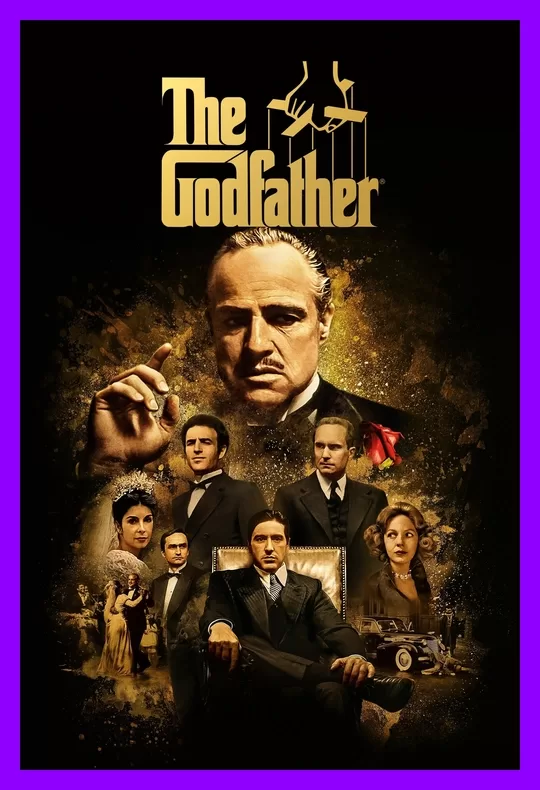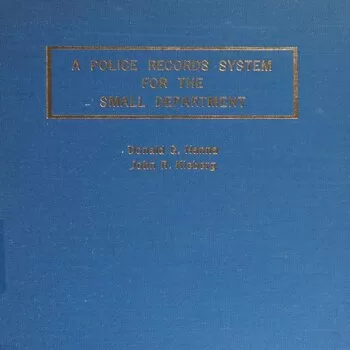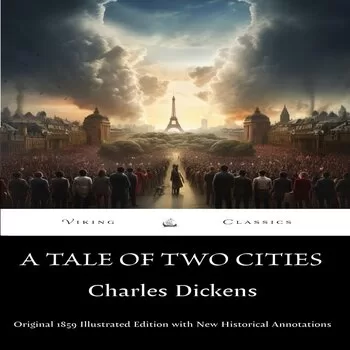Our Last Don “Mario Puzo”
The Godfather, a literary gem penned by Mario Puzo, has amazed fans and moviegoers alike for decades. This epic tale of power, family, and loyalty has undoubtedly left an indelible mark in the annals of popular culture. Puzo’s masterful storytelling skillfully combines elements of crime, drama, and tragedy to create a narrative that resonates with audiences worldwide.
The brilliance of The Godfather lies not only in its compelling plot but also in its richly developed characters. From the enigmatic Don Vito Corleone to the complex Michael Corleone, Puzo paints a vivid picture of the Mafia underworld and the intricate dynamics within the Corleone family.
Moreover, the enduring legacy of The Godfather extends beyond the pages of the novel. Francis Ford Coppola’s cinematic adaptation, regarded as one of the greatest films in history, further immortalized Puzo’s work and brought the story to an even wider audience.
In this article, we delve deeper into the Godfather phenomenon and uncover the secrets behind the enduring popularity and influence of Mario Puzo’s masterpiece. Join us as we explore the narrative brilliance, the iconic characters, and the cultural impact that continues to make The Godfather a true literary and cinematic legend.
The cultural impact of “The Godfather”
The Godfather, Mario Puzo’s literary masterpiece, has undoubtedly left an indelible mark on popular culture. The novel’s enduring legacy transcends the boundaries of the written word, as Francis Ford Coppola’s cinematic adaptation has cemented its place as one of the most influential and iconic films in the history of cinema.
The cultural impact of The Godfather is multi-faceted and far-reaching. It has not only captivated generations of readers and moviegoers become a touchstone for understanding the complexities of power, loyalty, and the inner workings of organized crime. The Corleone family’s story has become ingrained in the collective consciousness, with its memorable characters, quotable lines, and the distinctive atmosphere of the Mafia underworld.
The cultural significance of The Godfather is further evident in its widespread influence on various aspects of popular culture. From fashion and music to literature and television, the Godfather franchise has left its mark on society. The iconic imagery, such as the famous scene of Don Vito Corleone petting his cat, has become a visual shorthand for the Mafia and its power dynamics. The film’s soundtrack, composed by the legendary Nino Rota, has become a beloved and recognizable piece of cinematic music, evoking the moods and emotions of the story.
Analysis of the characters in “The Godfather”
At the heart of The Godfather’s enduring appeal are its richly developed and complex characters. Mario Puzo’s masterful storytelling brings to life a cast of unforgettable individuals, each with their motivations, flaws, and transformations.
The patriarch of the Corleone family, Don Vito Corleone, is undoubtedly the most iconic character in the novel and the film. Portrayed as a powerful and respected figure in the Mafia hierarchy, Vito Corleone embodies the duality of the Godfather – a ruthless criminal who also exhibits a deep sense of family loyalty and moral code. Puzo’s portrayal of Vito Corleone as a complex and nuanced character, capable of both cruelty and compassion, has cemented his status as one of the most compelling figures in literary and cinematic history.
The character of Michael Corleone, Vito’s youngest son, is perhaps the most intriguing and complex in the Godfather saga. Puzo’s exploration of Michael’s transformation from a war hero and family outsider to the ruthless and calculating heir to the Corleone empire is a masterclass in character development. Michael’s journey from innocence to corruption, as he navigates the treacherous waters of the Mafia world, is a captivating and tragic arc that resonates with readers and viewers alike.
The supporting characters in The Godfather, such as Sonny Corleone, Fredo Corleone, and Tom Hagen, also play crucial roles in the unfolding of the narrative. Puzo’s ability to breathe life into these secondary characters, each with their distinct personalities and motivations, is a testament to his storytelling prowess. The complex relationships and power dynamics within the Corleone family further enhance the depth and richness of the novel’s character development.

Hooks and motifs in “The Godfather”
The enduring appeal of The Godfather can be attributed to the depth and complexity of the themes and motifs that Puzo weaves throughout the narrative. At the core of the story lies the exploration of the nature of power, family, and loyalty – themes that have resonated with readers and audiences across generations.
The concept of power, both in the criminal underworld and within the Corleone family, is a central theme in The Godfather. Puzo delves into the intricate power structures of the Mafia, examining the ruthless methods used to maintain control and the consequences of wielding such immense power. The novel’s examination of the Corleone family’s rise to dominance and the struggle for succession serves as a metaphor for the universal human desire for power and influence.
Family and loyalty are also paramount themes in The Godfather. Puzo’s portrayal of the Corleone family as a tight-knit, yet deeply flawed, unit is a testament to the author’s understanding of the complexities of familial relationships. The novel explores the delicate balance between family loyalty and the demands of the criminal empire, as the Corleone children grapple with the legacy of their father’s choices. The theme of loyalty is further explored through the relationships between the Corleone family members and their trusted associates, such as Tom Hagen, who must navigate the treacherous waters of the Mafia world.
Underlying these central themes are a host of other motifs that contribute to the richness and depth of The Godfather. Puzo’s exploration of the immigrant experience, the role of religion and tradition, and the concept of “honor” within the Mafia code all add layers of complexity to the narrative. These thematic elements, combined with the novel’s vivid depictions of the Mafia’s inner workings, create a multifaceted and compelling read that has captivated generations of readers.
Shop new arrivals
The success and legacy of “The Godfather”
The enduring success and legacy of The Godfather can be attributed to the novel’s ability to captivate readers and audiences across generations. Puzo’s masterful storytelling, combined with the cinematic brilliance of Francis Ford Coppola’s adaptation, has cemented the Godfather saga as a cultural phenomenon that transcends the boundaries of literature and film.
The Godfather’s initial publication in 1969 was met with critical acclaim and commercial success, solidifying Puzo’s reputation as a skilled and versatile writer. The novel’s blend of crime drama, family dynamics, and Mafia intrigue struck a chord with readers, who were drawn to the vivid and immersive world that Puzo had created. The Godfather’s popularity only grew with the release of Coppola’s film adaptation in 1972, which went on to become one of the most celebrated and influential movies in cinematic history.
The enduring legacy of The Godfather can be seen in its continued relevance and impact on popular culture. The novel and its film adaptations have inspired countless works of literature, film, television, and even music, with the Corleone family’s story becoming a touchstone for understanding the complexities of power, loyalty, and the human condition. The iconic imagery, memorable characters, and quotable lines from The Godfather have become ingrained in the collective consciousness, ensuring the saga’s place as a cultural touchstone for generations to come.
The Godfather’s success and legacy can also be measured by the numerous accolades and awards it has received over the years. The novel has been recognized as a literary masterpiece, with Puzo’s writing praised for its depth, complexity, and narrative brilliance. The film adaptations, particularly Coppola’s seminal work, have been showered with critical acclaim, including multiple Academy Awards and a place on numerous “greatest films of all time” lists. The enduring popularity and influence of The Godfather have cemented its status as a true classic, a work of art that continues to captivate and inspire audiences worldwide.
Behind the scenes of “The Godfather” – the making of the movie
The cinematic adaptation of The Godfather, directed by Francis Ford Coppola, is widely regarded as one of the greatest films in the history of cinema. However, the journey from Puzo’s novel to the silver screen was not without its challenges and controversies.
The initial development of the film adaptation was marked by creative tensions and studio interference. Paramount Pictures, the studio behind the project, was initially hesitant about Coppola’s vision for the film, fearing that it would be too dark and violent for mainstream audiences. The studio’s concerns were compounded by Coppola’s relative inexperience as a director, having only a few feature films under his belt at the time.
Despite the studio’s reservations, Coppola remained steadfast in his commitment to capturing the essence of Puzo’s novel. He fought tirelessly to maintain creative control, even going so far as to mortgage his own home to finance the film’s production. Coppola’s unwavering dedication to the project, coupled with his meticulous attention to detail, would ultimately pay off, as The Godfather went on to become a cinematic masterpiece.
The casting of the film was another crucial element in the making of The Godfather. Coppola faced significant pushback from the studio, who were initially skeptical of his choices for the lead roles. The decision to cast Marlon Brando as Don Vito Corleone, a role that would become one of the most iconic performances in cinema history, was particularly contentious. Coppola’s insistence on Brando’s casting, despite the studio’s doubts, was a testament to his vision and creative instincts.
The Godfather’s production was also marked by numerous challenges, from location scouting and set design to the complex choreography of the film’s iconic scenes. Coppola’s attention to detail and his willingness to take risks, such as using a handheld camera for the famous “baptism” sequence, contributed to the film’s distinctive visual style and emotional impact.
The success of The Godfather, both critically and commercially, cemented Coppola’s reputation as a master filmmaker and solidified the film’s place in cinematic history. The behind-the-scenes stories of the movie’s production, marked by creative battles and Coppola’s unwavering vision, only serve to enhance the appreciation of this enduring classic.
Comparisons between the book and the movie adaptation
The Godfather, both in its literary and cinematic forms, has captivated audiences for decades. While the novel and the film adaptation share a core narrative, the two mediums offer distinct interpretations and perspectives on the Corleone family’s saga.
One of the primary differences between the book and the movie lies in the depth and breadth of the storytelling. Puzo’s novel delves deeper into the complexities of the Corleone family’s history, providing a more comprehensive exploration of the character’s motivations and the intricate power dynamics within the Mafia world. The novel’s expansive scope allows for a richer, more nuanced portrayal of the Corleone clan and their rise to power.
In contrast, Coppola’s cinematic adaptation, while maintaining the essence of the novel, necessarily streamlines the narrative to fit the constraints of the medium. The film focuses more on visual storytelling, leveraging the power of cinematography, performance, and music to convey the emotional weight and tension of the Corleone family’s journey. This shift in emphasis allows the film to create a more immediate and visceral impact on the audience while sacrificing some of the novel’s depth and complexity.
Another key difference lies in the characterization and development of the central figures. While both Puzo and Coppola present richly drawn characters, the mediums allow for distinct interpretations. The novel’s deeper dive into the characters’ psyches and inner workings provides a more nuanced understanding of their motivations and transformations. In contrast, the film’s reliance on visual cues and performances, such as Marlon Brando’s iconic portrayal of Don Vito Corleone, creates a more iconic and indelible impression of the characters in the minds of the audience.
Despite these differences, the book and the film adaptation of The Godfather are inextricably linked, each offering a unique and complementary perspective on the Corleone family’s saga. The enduring popularity and cultural impact are a testament to the timeless appeal of Puzo’s masterpiece and the brilliance of Coppola’s cinematic interpretation.
The Godfather’s influence on popular culture
The Godfather’s impact on popular culture is undeniable, with its influence spanning across various mediums and genres. Puzo’s novel and Coppola’s film adaptation have become touchstones in literature, cinema, and beyond, inspiring countless works and shaping the cultural landscape.
In literature, The Godfather has spawned a vast array of crime fiction and organized crime narratives, with writers drawing inspiration from Puzo’s masterful storytelling and the rich tapestry of the Mafia underworld. The novel’s enduring popularity has also led to numerous sequels, prequels, and spin-offs, further expanding the Godfather universe and tantalizing new generations of readers.
The cinematic influence of The Godfather is equally profound, with the film’s iconic scenes, memorable characters, and distinctive visual style becoming embedded in the collective consciousness of moviegoers worldwide. Coppola’s masterful direction and the film’s technical excellence have inspired countless filmmakers, who have sought to emulate the atmospheric tension and thematic depth that defined the Godfather saga. The film’s impact can be seen in the proliferation of crime dramas and gangster films, with many works drawing directly or indirectly from the Godfather’s legacy.
The Godfather’s influence has also extended beyond literature and cinema, permeating various aspects of popular culture. The novel and film’s distinctive imagery, such as the famous horse head scene or the Corleone family crest, have become recognizable symbols, often used as shorthand for the Mafia and the power dynamics within organized crime. The Godfather’s iconic lines, such as “I’m gonna make him an offer he can’t refuse,” have become part of the cultural lexicon, transcending their original context and becoming embedded in the public consciousness.
The enduring popularity and influence of The Godfather can also be seen in the way it has been referenced, parodied, and reimagined across various mediums, from television and music to fashion and video games. The Corleone family’s story has become a touchstone for understanding the complexities of power, loyalty, and the human condition, with the novel and film serving as a cultural touchstone for generations of fans and creators alike.
Critical reception and awards
The Godfather, both in its literary and cinematic forms, has received widespread critical acclaim and numerous prestigious awards, further cementing its status as a true masterpiece of its respective mediums.
Mario Puzo’s novel, published in 1969, was an immediate critical and commercial success. The Godfather was praised for its vivid storytelling, complex character development, and its insightful exploration of the Mafia underworld. Puzo’s writing was lauded for its depth, nuance, and ability to captivate readers with its gripping narrative. The novel was a finalist for the Pulitzer Prize in 1970 and has since been recognized as a seminal work of crime fiction and a landmark in American literature.
The cinematic adaptation of The Godfather, directed by Francis Ford Coppola, was an even greater critical triumph. The film was hailed as a cinematic masterpiece, with reviewers praising its technical excellence, powerful performances, and Coppola’s masterful direction. The Godfather won three Academy Awards, including Best Picture, Best Actor (Marlon Brando), and Best Adapted Screenplay (Mario Puzo and Francis Ford Coppola). The film’s accolades include recognition from the American Film Institute, which named it the second-greatest American film of all time, and numerous other prestigious awards and honors.
The Godfather’s critical reception has only grown in the decades since its release, with the novel and film being recognized as enduring classics that have withstood the test of time. Both works have been the subject of extensive scholarly analysis, with academics and critics exploring the depth and complexity of the Corleone family’s saga, the themes of power and loyalty, and the cultural significance of the Godfather phenomenon.
The numerous awards and accolades bestowed upon The Godfather, including its inclusion on countless “best of” lists and its enduring popularity among audiences and critics alike, are a testament to the brilliance and lasting impact of Puzo’s masterpiece. The Godfather’s critical reception and the recognition it has received over the years serve to further solidify its place as a true landmark in the annals of literature and cinema.
Conclusion: The lasting brilliance of “The Godfather”
The Godfather, Mario Puzo’s literary masterpiece, and its cinematic adaptation by Francis Ford Coppola have undoubtedly cemented their place as timeless classics that continue to captivate audiences across generations. The enduring appeal of this epic tale of power, family, and loyalty lies in the depth and complexity of its storytelling, the richness of its characters, and the profound themes that resonate with the human experience.
Puzo’s novel, with its vivid depictions of the Mafia underworld and the intricate dynamics within the Corleone family, has become a touchstone for understanding the complexities of power, the nature of loyalty, and the universal human desires that drive individuals to both greatness and downfall. The Godfather’s characters, particularly the iconic figures of Don Vito Corleone and Michael Corleone, have become indelible parts of our cultural consciousness, serving as archetypes that continue to inspire and fascinate.
Coppola’s cinematic adaptation is widely regarded as one of the greatest films.








